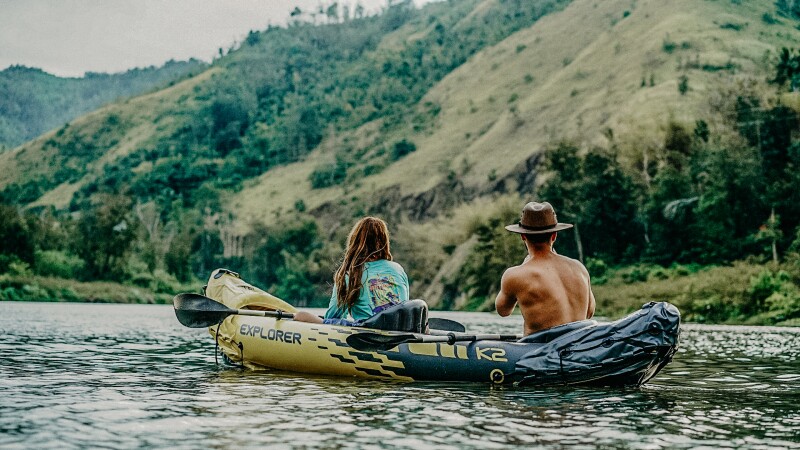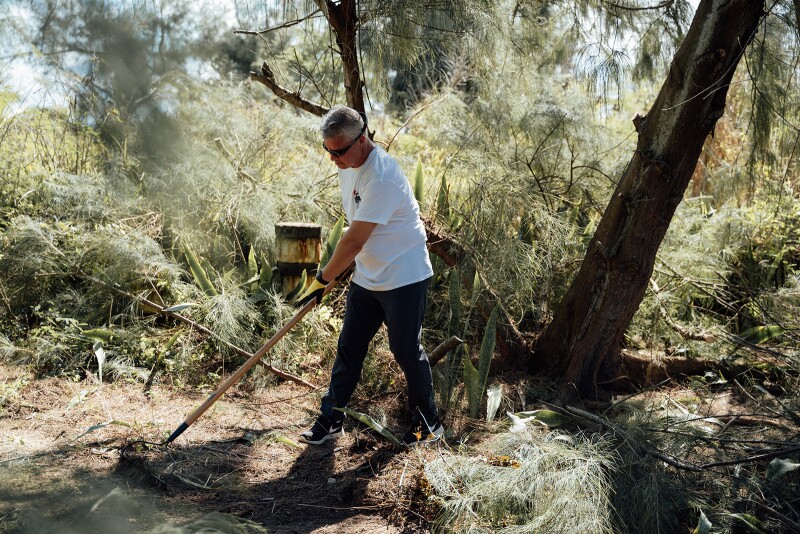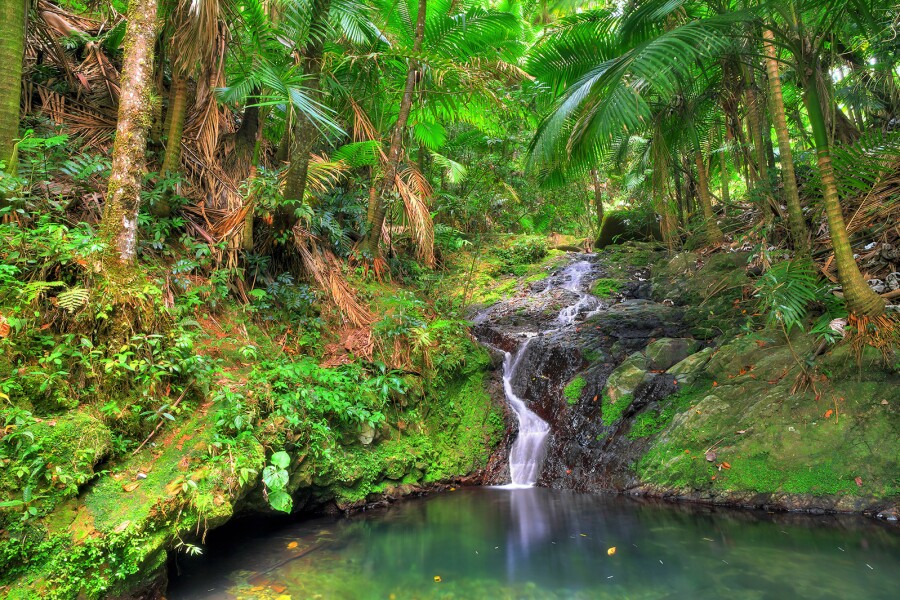No place in the world is a pandemic hideaway, but many locals in Puerto Rico feel their home has been treated by tourists as such—despite the fact that COVID-19 has infiltrated the U.S. territory just like anywhere else. Considering the island’s vulnerable healthcare system and protracted economic depression, the damage could worsen with an influx of travelers ignoring coronavirus safety protocol.
Puerto Rico still has a “very high” rating from the CDC, which currently discourages travel there. But the island has been gradually opening up, welcoming responsible travelers who present negative COVID tests, wear masks, and comply with the nightly curfew. Unfortunately, too many are frolicking about mask free, as if the pandemic somehow never hit.
The last year has presented us with an opportunity to rethink how we travel, to try and be more respectful, empathetic, responsible travelers. That means making sure it’s safe to visit, coming prepared, and conducting research ahead of time. It’s not just about where we stay, but why we choose to stay there. In stacking our itinerary with adventures, are we considering the effect of each of those? Are we maximizing local benefit in all our plans?
Ecofriendly tourism has long been an option in Puerto Rico, but Carmen Portela says that visibility for this kind of travel, especially before Hurricane Maria, was minimal. She’s the cofounder of Local Guest, a “women-powered travel company dedicated to co-creating and promoting authentic tourism experiences by working hand in hand with local communities and entrepreneurs.” The company’s goal since 2015 has been to make it easier for travelers to connect with community-based projects. “They’ve been running for years and decades, and travelers don’t know about them because they’re either not promoted or they’re off the beaten path,” she says.
One of these is Coporación Piñones Se Integra (COPI), launched in 1999 to serve the northeastern coastal communities of Loíza and Piñones. “They preserve the historic nature and culture of Afro-Caribbean cultures in Puerto Rico,” Portela says. “Loíza and Piñones’ history is one of a lot of luchas (struggles); they have fought for the land.” The nonprofit offers kayak and bike rentals in the area as one means of generating income for COPI’s work.

Local Guest offers a range of experiences that connect you to the people and places of Puerto Rico.
Courtesy of Local Guest
Travelers can also work directly with Caras con Causa, a nonprofit committed to ending poverty through grassroots development in smaller towns in the northeastern municipalities of Guaynabo and Cataño. Local Guest provides a connection, but interested travelers can also check their website to volunteer in other areas including community education and humanitarian brigades.
Alongside cofounder Mónica Pérez, Portela has worked diligently with grassroots groups and nonprofit organizations to design experiences in which tourists can give back as they learn about Puerto Rico through a hyper-local, authentic lens. Attending and participating in a session of bomba music and dance—a historic tradition of Afro-Caribbean resistance—is one route, and another opportunity is hands-on learning about indigenous Taíno pottery making, after exploring a cave system marked by ancient hieroglyphs in Morovis, in the northern center of the island. It’s important to keep in mind, however, that the experiences available through Local Guest rotate depending on the projects, environmental conditions, and, of course, COVID-19 safety. (You can also email them directly for one-on-one guidance.)
Portela advocates for slow tourism in every aspect—and two-night stays at international, upscale hotels and cruise ships docking for an afternoon in Old San Juan simply don’t fit the requirements.
Consider what—and where—you eat
Where and what you eat while in Puerto Rico matters too. Puerto Rico’s fishing community includes some 1,200 fishers, says Raimundo Espinoza. He heads up Conservación ConCiencia, an environmental conservation nonprofit through which researchers work closely with communities on conservation, climate resilience, and sustainability and promoting economic benefits for locals.
Espinoza has worked with the fishing community in particular to enable them to preserve the shark population (including endangered species), remove tons of debris dumped into the ocean during Hurricane Maria, and build solar power systems for fishing associations. That means that, in the unfortunately recurring event of a power outage, they won’t lose their earnings. The latter endeavor also cuts costs for fishermen and has inadvertently become a community resource; neighbors now come to the fishermen to borrow electricity when in need.
His advice for travelers echoes Portela’s: Don’t confine your experience of Puerto Rico to San Juan alone. Espinoza says he frequently recommends a trip to the malecón, or boardwalk, in Naguabo, an eastern coastal municipality that’s been a focus of Conservacion ConCiencia’s work. There, you’ll find freshly caught fish served at 100 percent local restaurants.
“Worldwide, one of the biggest threats to the environment is poverty,” he notes. “So for tourists, one of the things they can do is really make sure that those dollars, that money that they’re bringing from outside, stays in those communities.”
Discover independently owned accommodations
In the central midwest mountains of Adjuntas, Villas Sotomayor is kind of its own mini-neighborhood, with 34 rooms spread around thriving gardens, two crystalline pools, and a lobby and restaurant. It’s one of Puerto Rico’s many paradores: independently owned accommodations structured like resorts but on a smaller scale, each with its own distinct charm and amenities. These kind of places offer a more personal experience. At Paradores Villa Sotomayor, operating since 1970, there’s a farm, from which its restaurant sources ingredients, plus horseback rides and camping grounds. It’s a majority green area, and coupled with the surrounding mountains, the grounds feel especially rural and relaxed.
A favorite of Portela’s is the Rainforest Inn, a B&B offering three separate villas a mile up and inside the northern edge of El Yunque National Forest, making for jaw-dropping views of the tropical rain forest below. You can hike on a private trail during your stay, after a locally sourced and vegetarian breakfast (perhaps guava and cream cheese–stuffed french toast or eggs florentine). The Rainforest Inn operates as sustainably as possible, using cistern-sourced water, solar energy (with Tesla powerwalls for backup), and no pesticides in its colorful gardens.
A distinctly agriculturally centric accommodation option is El Pretexto, a “culinary farm lodge” where all food served is 100 percent locally sourced. Rather than offer a static restaurant, however, dining here is curated by a rotating roster of chefs who create pop-up experiences. Situated in the southern-central neighborhood of Cercadillo in mountainous Cayey, El Pretexto also offers stunning views reaching the far edges of the island from a private terrace included with every guest room.

“Turn off the radio and hear the music of nature,” suggests a sign in Toro Negro State Forest.
Courtesy of Local Guest
Explore Puerto Rico’s diverse geography
Casual travelers may not realize that Puerto Rico’s geography and topography are incredibly varied. Its center is mountainous; there’s a dry forest to explore in Guánica, and tucked-away rivers where time-worn rock waterslides drop swimmers into deep, natural pools. There are wetlands and mangrove forests. There are even salt flats, where the water has turned pink from salt mining dating back to the indigenous Taínos who lived on land that is now a National Wildlife Refuge in Cabo Rojo.
Very recently reopened is the Parque Nacional de las Cavernas del río Camuy, a magical place to hike into numerous caves around the third largest subterranean river in the world. In the four years it was closed after Hurricane Maria, its ecosystem revived—it’s now lush with green vegetation on the outskirts and the bat colonies deep inside are flourishing. You’ll see butterflies, giant crickets, and scorpions, too. Tours guided by experts are about 75 minutes long and focus on the flora and fauna. Anyone stepping inside is a visitor who should leave no trace behind.

Local Guest visitors enjoy a bomba lesson.
Courtesy of Local Guest
Join a community effort
Volunteering with a community-based environmental effort is an especially rewarding experience—one in which you’ll learn through Puerto Rican ecoactivists about the island’s struggles and triumphs.
Through Local Guest, join the Coalición Restauración de Ecosistemas Santurcinos (CRES) to help protect sea turtles, including the endangered Tinglar or leatherback turtle, by bettering the habitats in which they live. There are also community gardens to help maintain, trails to restore while exploring, and a local farm and its restaurant to visit.
Ensure your dollars stay in Puerto Rico
Tourism only fully benefits locals when the dollars you spend on your trip stay in the location you spend them. This sounds like common sense, but it’s easy to accidentally drop your dollars elsewhere. If you find yourself at a Burger King wearing a Puerto Rico souvenir hat you bought at Walgreens, you’re doing it wrong.
Forgot your toothpaste? Soap? Rather than shop at a chain drugstore, go to a local pharmacy or convenience store. If you’re looking for late-night eats, head to food trucks, not fast food. Superstores like Walmart are most definitely the easy out when you’re looking to stock the fridge for a long stay, but why not instead try agricultural markets, like San Juan’s Plaza del Mercado en Santurce, or roadside fruits and veggie stands? How about gathering groceries at Puerto Rican–run stores like Freshmart, Plaza Loíza, or SuperMax? For every national or international store, there is a local alternative.

CRES offers opportunities for visitors to get their hands dirty.
Courtesy of Local Guest
Commit to a long-term relationship
You’ve enjoyed the island, and now you’re gone. That’s that. Or is it? You can continue to support Puerto Rico through a variety of ways, like the Adopt-a-Coquí program. A donation of $25 or more for the symbolic adoption of a coquí frog—the island’s ubiquitous, chirping mascot—will directly benefit Conservación ConCiencia. It’s likely some of the community groups you worked with also accept donations.
“Even if you don’t donate to us and you want to keep on looking [for other places to donate], that’s great,” Espinoza says. “Because there’s so many small nonprofit organizations that are doing great work at a community level.”
You can also make a positive, enduring impact by educating others about your sustainable visit to Puerto Rico. Take what you’ve learned and tell someone else, so that they too, can help uplift the island.
>> Next: AFAR’s Puerto Rico Travel Guide











